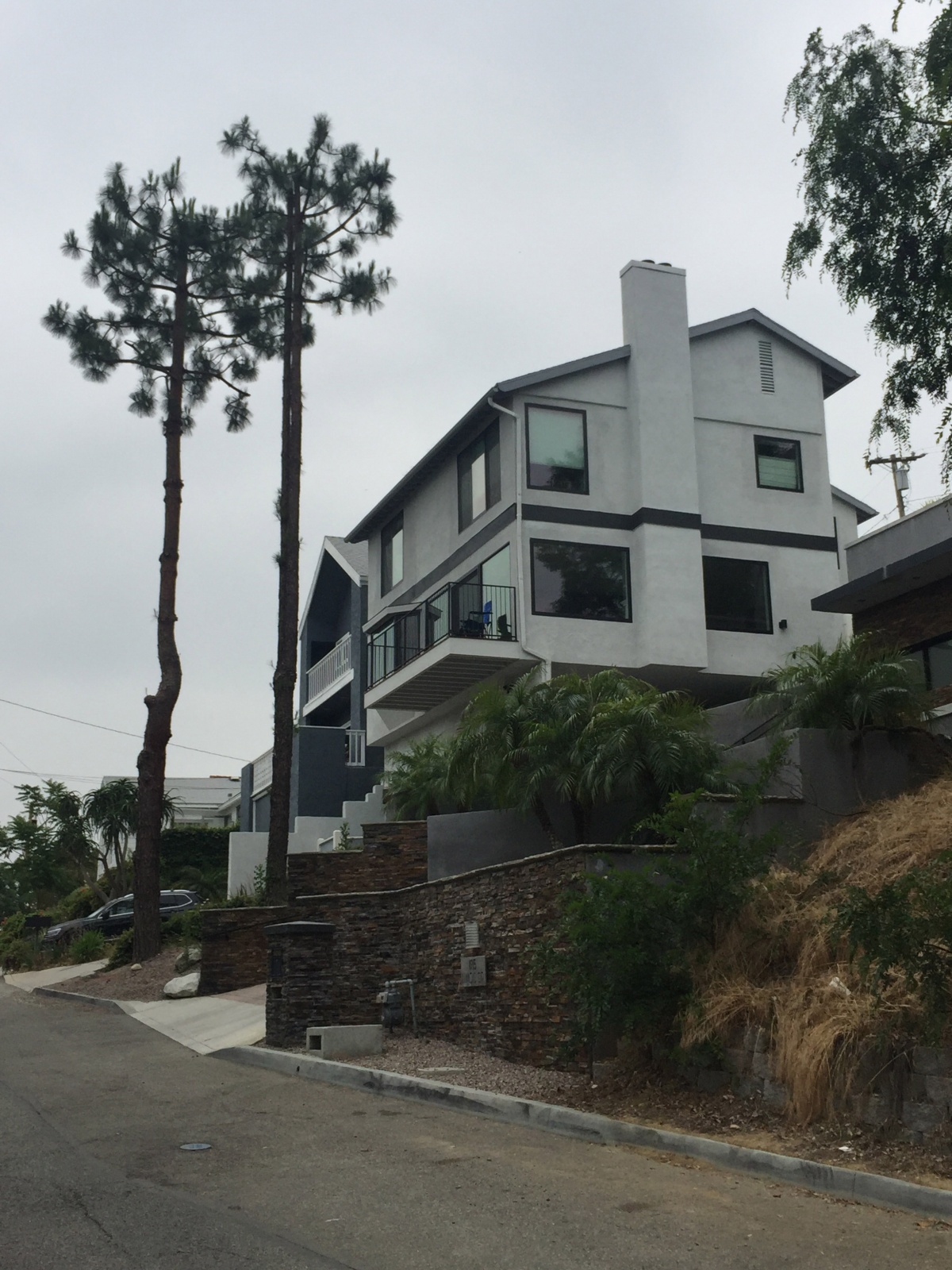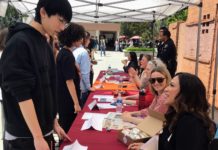
After what will likely be a lengthy meeting on the new budget, updated capital improvement program and a bevy of routine city business, the South Pasadena City Council on Wednesday will take up Maia and Fernando Pas’ appeal of the Natural Resources and Environmental Commission’s (NREC) decision forbidding them to remove two, 40-foot tall, non-native Canary Pine trees from the front yard of their new home at 1921 Illinois Dr.
But while no one on the City Council-appointed NREC voted in their favor, the Pas have an important ally in their appeal: the city’s Public Works department. The department “respectfully disagrees” with NREC, believing the Pa’s evidence meets the criteria for removal.
At over 870 feet above sea level, the Pa’s house stands on the peak of the highest hill in South Pasadena. A real estate listing described it as having “a beautiful city lights view on top of the City of South Pasadena.”

The Pas are ex-Pasadenans who moved to “Tree City USA” late last year. According to an online testimonial they recorded for one of their realtors, Maia is a program manager at NASA JPL and Fernando vice president of design and master planning at NBCUniversal Media LLC. They were married three years ago and bought the 35-year-old, 3-bedroom, 3-bathroom house last August for $1.3 million, intent on starting a family.
But within weeks of moving in, they decided the trees had to go. Last November, they filed a Private Property Tree Removal application. The city arborist deemed both trees healthy. A public notice went out to the dozen-or-so neighbors within 100 feet. No letters of opposition were received.
Citing past practice for healthy tree removal applications, city staff referred the matter to NREC, and on January 22, the commission voted against the Pas 6-0 with one abstention. On Feb. 3, the Pas appealed and on March 26, NREC affirmed its denial 6-0.
So in early April, the Pas appealed to the City Council and they await Wednesday’s decision.
Ironically, it appears that had they started the whole process a few months later, they might never have had to face the NREC. Only two trees are involved. But on Feb. 6, the Council formally adopted a revision to the city’s “Tree Ordinance” (Municipal Code Chapter 34), specifying that the public works director can refer tree removal applications to NREC only if at least three trees are involved.
Chapter 34 states a healthy tree can be removed if:
- it poses a “risk of injury or harm to any persons or property, or is interfering with a structure or building” and there is reasonable alternative to mitigate the interference; denial of the application would create an “unreasonable hardship” to the property owner; or the owner plans a replacement tree that creates “greater benefits” then the existing one.
The Pas assert the trees “are growing into our home” and drop “significant amounts of pine needles into our gutters and steep, slippery driveway year round.” They say the rain gutters are not accessible by ladder due to the height of the house and the slope of the driveway. Mr. Pa has mild arthritis in one arm, limiting his ability to sweep. They therefore have only two options to prune the trees and clean the gutters: rent scaffolding, which according to one estimate they got would cost $3,400; or rent a 40-foot boom and get street closure permits every month to do the work. These would create an “unreasonable hardship,” they argue, since they have a new mortgage and pay nearly $15,000 a year in property tax–“a financial hardship that we simply cannot absorb.”
Based on a comparison with a Google Earth Pro image from 2015, it appears that all but a few of the highest branches of both trees have already been completely removed and that those remaining do not reach over the roof of the house.
The NREC denied the application saying the Pas could install rain gutter guards; that “undue hardship,” cannot be construed as the “regular maintenance” of a tree which is “a reasonable cost of home ownership”; and that the trees provide shade, reducing home energy consumption while replacement trees would provide no greater benefit.
The Pas’ appeal says purchasing a gutter screen is no solution as screen maintenance would also be costly. They say they do face hardship as “we simply do not have the means to pay exorbitant amounts of money annually for maintenance of two trees.” The acknowledge that the trees provide shade that reduces energy consumption, but argue “energy is a renewable resource” and that they are prepared to replace the trees with native, drought-tolerant trees that are consistent with the city’s tree plan and would conserve water, which is not renewable.
The Public Works staff supports the Pas. It said the potential for a slip-and-fall accident due to the pine needles is a significant risk and that gutter guards would not resolve the problem. It acknowledges the Pas did not explain the kind of damage the trees are doing to the house, but agreed the limited options for pruning are unreasonably costly. It also said tree removal would provide a greater benefit because the replacement trees would provide a larger canopy, be drought tolerant, native, require less water and have “the potential” to save energy.
Neither the Pas nor an official from the city could be reached for comment.



















.png)









